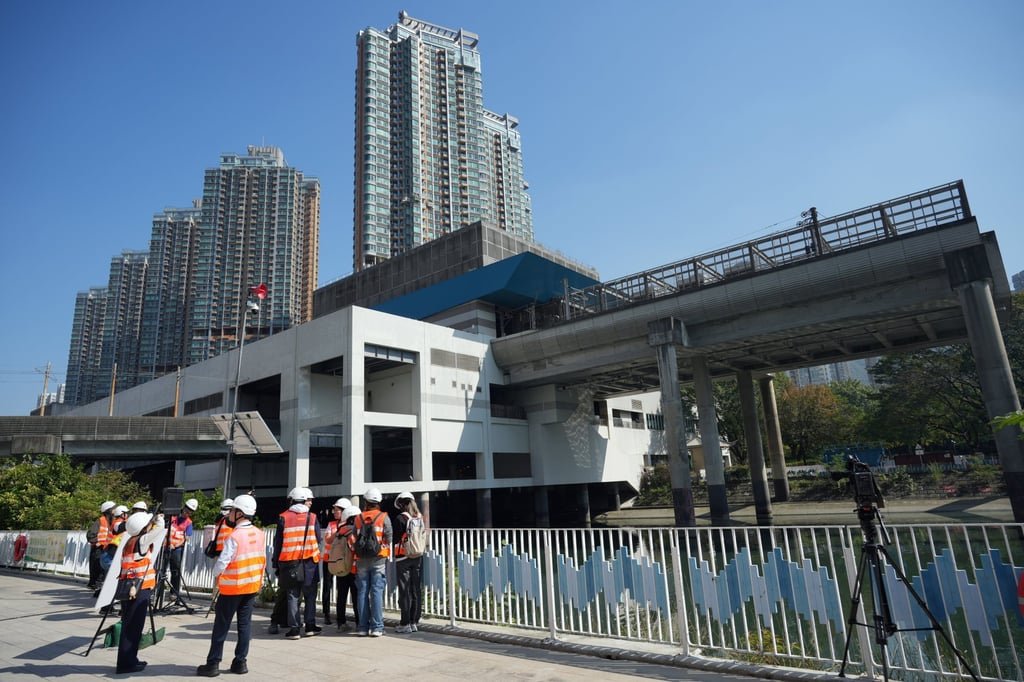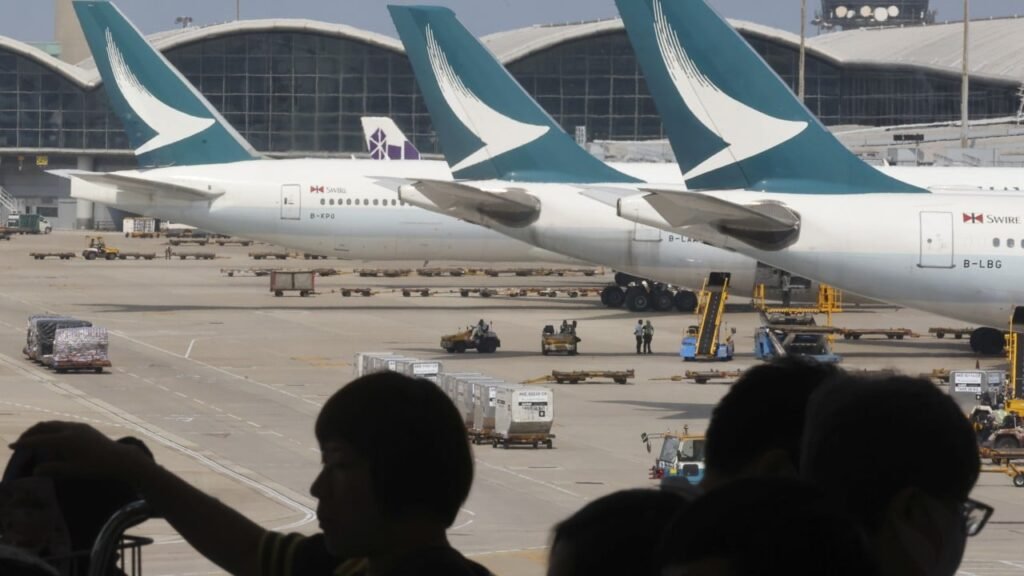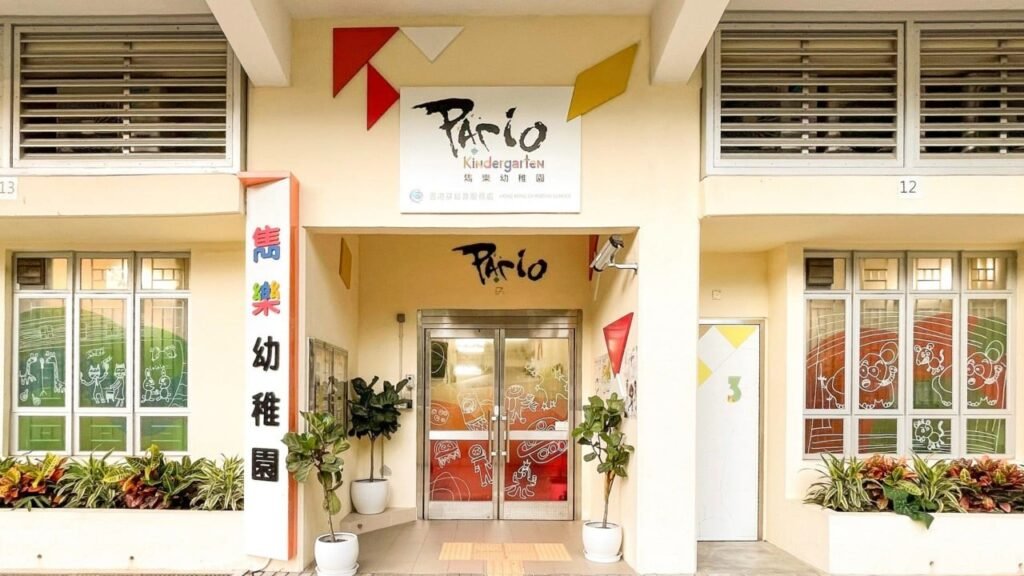Instead of disposing of it in landfills, food waste can be converted into energy and compost through proper treatment and processing. Two plants in Hong Kong are doing just that.
—
Managing food waste in Hong Kong is challenging. Currently, the recycling rate of food waste is low, and most of it is disposed of in landfills – which, however, are reaching their full capacities. What’s more, landfill operations have significant environmental impacts. For example, landfill gas, which primarily consists of methane and carbon dioxide, is a major contributor to global warming and poses a risk of gas explosions. Moreover, landfill leachate can contaminate groundwater and soil when liquids percolate through the solid waste.
In 2023, more than one million tonnes of food waste – approximately 3,200 tonnes per day – were disposed of in Hong Kong’s landfills, accounting for 29% of the total municipal solid waste. 63% of the total was produced by domestic households and 37% came from commercial and industrial sectors.
Food waste is, in fact, organic and biodegradable – and there are more efficient ways of disposing of it. One is composting, and the other is converting it into energy.
Currently, Hong Kong has two food waste recycling facilities: the Organic Resources Recovery Centre Phase 1 (O·Park1) in Siu Ho Wan, North Lantau, and Phase 2 (O·Park2) in Sha Ling, North District. They can treat 200 tonnes and 300 tonnes of food waste per day, respectively.
The plants convert food waste into biogas – a renewable energy source that can replace fossil fuels like natural gas and crude oil – for electricity generation. The residues from the process can also be produced as compost for landscaping and agriculture use.
Waste-to-Energy Process
The waste-to-energy process is straightforward. First, the food waste undergoes pre-treatment, such as the addition of water and removal of impurities. Then, the treated food waste undergoes anaerobic digestion, a biochemical process where anaerobic bacteria break down organic matter in an environment without oxygen. This process has two end products: biogas and digestate. While biogas is useful for generating heat and electricity, the digestate can be further processed for composting.

Electricity Generation
Biogas can be used as a fuel in combined heat and power (CHP) units. After proper treatment, the gas can be combusted to turn the generator to produce electricity. The electricity supports the operation of the recycling facility and achieves self-sustaining operation. The surplus electricity is exported to the power grid.
It is estimated that O·Park1 and O·Park2 can support the electricity consumption of 3,000 and 5,000 households annually, respectively. At the same time, heat recovery devices are used to capture heat from the CHP system and support the facility’s heating demand.
Composting
The wet material left over from anaerobic digestion is called digestate. It can be turned into compost after dewatering and further degradation. The compost is rich in nutrients and able to improve soil fertility, making it suitable for planting.
O·Park1 hosts a rooftop farm, O·Farm, demonstrating the application of compost in agriculture. In each harvesting season, O·Park1 donates the harvested crops to food donation organizations or distributes the crops to the community through educational and public events.
Currently, the public can redeem 100 grams of the compost via an app or schedule a visit to O·Park1 and bring their own container to collect the free compost. Government departments, schools, and organizations can apply for free compost by submitting an application form to the EPD.
Food Waste Recycling Policies
To increase food waste recycling rates in Hong Kong, the Environmental Protection Department (EPD) has been installing food waste recycling bins in public rental housing estates, private housing estates, and various recycling stations.
In 2020, it implemented the GREEN$ Electronic Participation Incentive Scheme. The public can download a mobile app and earn points by recycling waste at the EPD’s recycling facilities. The points can be redeemed for gifts like daily necessities, or can be used for shopping at supermarkets and retail stores. Residents can earn a maximum of 50 points per day for recycling food waste.

Recent research by the Hong Kong University of Science and Technology suggests that since late 2023, public housing achieved complete coverage with smart bins, while collection points saw an 81% jump, and private housing bins surged by 230%. This push led to household recycling increasing fivefold, alongside a 50% increase in the volume of daily food waste collected.
As announced in the Chief Executive’s 2025 Policy Address, unveiled in September, the government is planning to keep expanding the food waste recycling network in residential areas, aiming at having at least one food waste recycling bin in each block of public rental housing estates by 2026. But the same research suggests that the goal has yet to be met, with private estates lagging significantly “due to complex application procedures.”
The EPD has also been providing free food waste collection services for commercial and industrial sectors since 2021. Premises producing a large amount of food waste, such as shopping malls and food factories, can contact the EPD to apply for food waste recycling bins. The EPD will arrange designated trucks to collect food waste on a daily basis. The department has also set up food waste recycling points at over 100 public refuse collection points and various temporary food waste recycling spots at fixed hours and locations every night.
The collected food waste is sent to O·Park1 and O·Park2 to be turned into biogas through a process known as for anaerobic digestion. The biogas is then used to generate electricity.
To further enhance Hong Kong’s food waste treatment capacity, the EPD has collaborated with the Drainage Services Department (DSD) to implement the Food Waste/Sludge Anaerobic Co-digestion Trial Scheme. Under the trial, which was implemented in 2019, a maximum of 50 tonnes of food waste per day is delivered to the sewage treatment plant for co-digestion with sewage sludge instead of being sent to landfills.
While the EPD handles the food waste pre-treatment and transportation processes, the DSD manages the co-digestion and energy recovery processes. The biogas generated for electricity generation is used to power the sewage treatment facilities’ internal power combustion, according to the scheme’s website.
Currently, co-digestion operations take place in Tai Po Sewage Treatment Works and Sha Tin Sewage Treatment Works.
Alternatives
While food waste recycling can transform waste into energy and compost, it is not a perfect long-term solution. Although the food waste recycling rate in Hong Kong has increased from 2% in 2018 to 6% in 2022, it remains very low. The root problem cannot be solved until households and business sectors change their habits and continue to create and dispose of food waste in rubbish bins. Complementary management strategies such as reducing food waste at the source and promoting food donations should thus also be part of the solution.
To reduce food waste at the source, the EPD suggests checking home food stocks to avoid over-purchasing, paying attention to expiration dates, properly storing food to prevent spoilage, and cooking or ordering a reasonable amount of food to minimize leftovers.
At the same time, businesses such as restaurants and canteens can consider donating surplus food when the hygiene conditions allow. Currently, Hong Kong has 17 charitable organizations that provide food donation services. They collect the surplus food, ensure food safety and quality, prepare meals, and redistribute them to people in need.
Featured image: Wikimedia Commons.
More on the topic: 11 Effective Solutions for Food Waste
This story is funded by readers like you
Our non-profit newsroom provides climate coverage free of charge and advertising. Your one-off or monthly donations play a crucial role in supporting our operations, expanding our reach, and maintaining our editorial independence.
About EO | Mission Statement | Impact & Reach | Write for us








